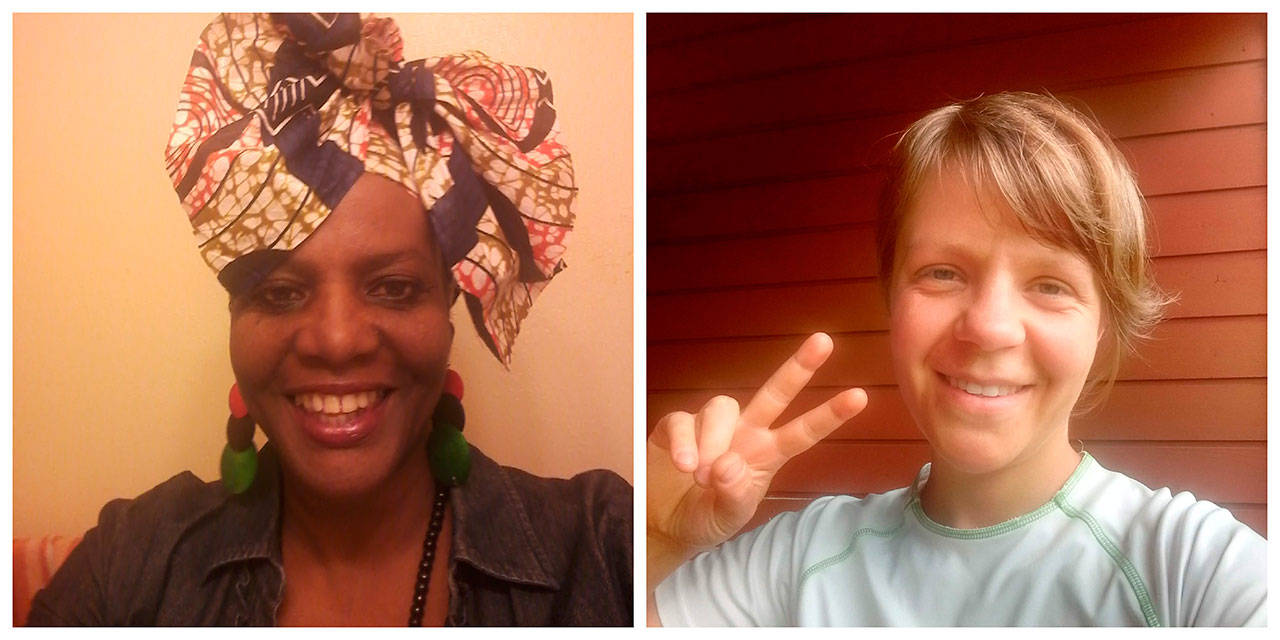Anneliese Maiye is relatively new to Vashon Island School District (VISD), and she’s already earned a Partners In Education (P.I.E) grant for her exceptional approach to teaching seventh-grade humanities at McMurray Middle School.
Armed with an idea from a former colleague, Maiye is creating a Humanities curriculum that she calls Afro-Centric. A 2019 conference titled “Decolonizing Education” brought home to her the point that teaching ‘about’ Black history would not help Vashon students to be anti-racist.
“The more I learn about becoming a better anti-racist teacher, the more I realize how white-centered my own education and teaching have been,” she said.
She began to see the depth of white supremacy in shaping our entire school system, texts and curricula. It dawned on her that, as a teacher, she would have to go far beyond the state standards and curricula for teaching about Black culture. She had to redo her entire curriculum and seek expertise from each of those communities. So, on the recommendation of a Seattle colleague, Maiye enlisted Kim Mustafa, a Black historian in Seattle, to help her in her research.
What Mustafa brought to Maiye were the stories of Black people in Seattle and the region. And she brought that history from Seattle’s settlement days in 1851 to the present. It wasn’t easy.
“It was just a six-hour contract; I didn’t even know if I could provide her with what she was seeking,” said Mustafa of her initial conversations with Maiye.
She started by consulting with Black educators about how to help. Then, she just threw a lot of information, resources and stories at Maiye. It was, she said, “…a lot to absorb.” She knew Maiye would have to find a way to articulate this narrative to her colleagues. It looked like a tall order.
Maiye and Mustafa decided to start fresh on the curriculum with stories from Black folks who were here in Seattle — their lives, what they did and how things looked through their eyes.
Black people in Seattle, when it was first settled, were confined by law to the Central District. Mustafa’s story of the first Safeway store in the CD, reveals a great deal about segregation in Seattle.
“When Safeway first came to Seattle and opened a store in the Central District, they were in the middle of a Black neighborhood but wouldn’t hire any Black people,” she said. “Blacks were upset, so four or five people went to Safeway every day to fill their carts with frozen food 15 minutes before closing. That act forced Safeway’s white workers to stay in the store after closing. Safeway got the message and soon changed their hiring policies.”
Maiye and Mustafa like stories such as the Safeway tale because it illustrates Black people’s strength, moving away from the stereotype of persecuted Black slaves. And it reveals the reality Seattle doesn’t want to expose about the extent of racism in the region.
Black Seattleites made the Central District their community. Then development spurred gentrification in the 1990s, pricing Black people out of the CD and moving white people in. That started with a government-funded program called “Weed and Seed,” billed as a way to ‘remove all the negative influences’ from high crime areas (read Black, brown and poor people) to promote a better quality of life.” A Justice Department grant-funded the Weed and Seed program, ‘seeding’ investment in the CD while ‘weeding’ out the ‘criminal element from the neighborhood and increasing real estate values.
Recently, displaced CD residents have begun returning to the neighborhood and reclaiming historic buildings there for community use.
Mustafa added that it’s important for all kids to hear these stories so they can compare the different perspectives. And it’s important for Black children to know their ancestors have also been here since Seattle was founded.
“Black Seattleite history is virtually undocumented,” she said.
In fact, the only documented Black man during the first years of Seattle’s settlement was Manuel Lopes, a free Black man. It’s likely there were many other Black Seattleites at the time who were simply undocumented in white records.
“The way history is taught now de-centers Black people,” said Maiye.
Though Vashon’s Black community is small, she contends that it’s important they be heard.
“We harm our Black families, students and teachers when we ignore that they are here and part of this community,” Maiye said. White students suffer as well when their understanding of the history of all cultures in our country is not only incomplete but false.
Because Maiye is aware she can’t accurately communicate the lived experiences of being a Black person in this region, she’ll soon bring Mustafa to her class (virtually) to tell more stories and flesh out students’ appreciation for Black people’s history in Washington and their lives today. She’s done all this with a small $600 grant from P.I.E.
With continued support, Maiye’s brand of education has the potential to enrich and expand island students’ capacity for success in the diverse world.
According to Mustafa, Maiye’s students will soon be teaching her.
“Those kids of Gen Z are out there demonstrating from a totally different perspective — they have an awareness that most living adults didn’t have at their age,” she said.


